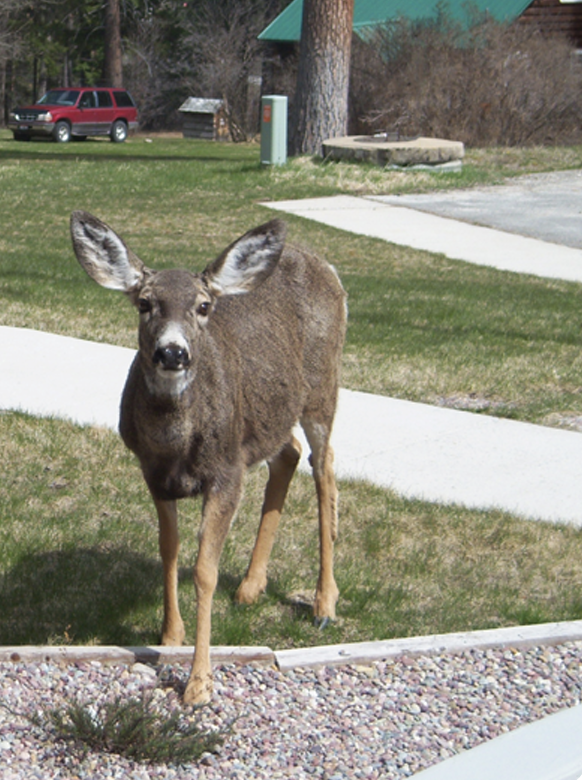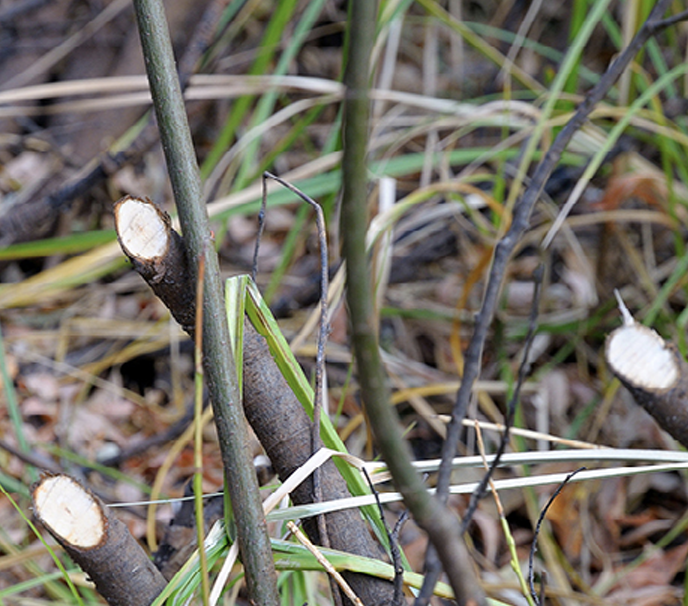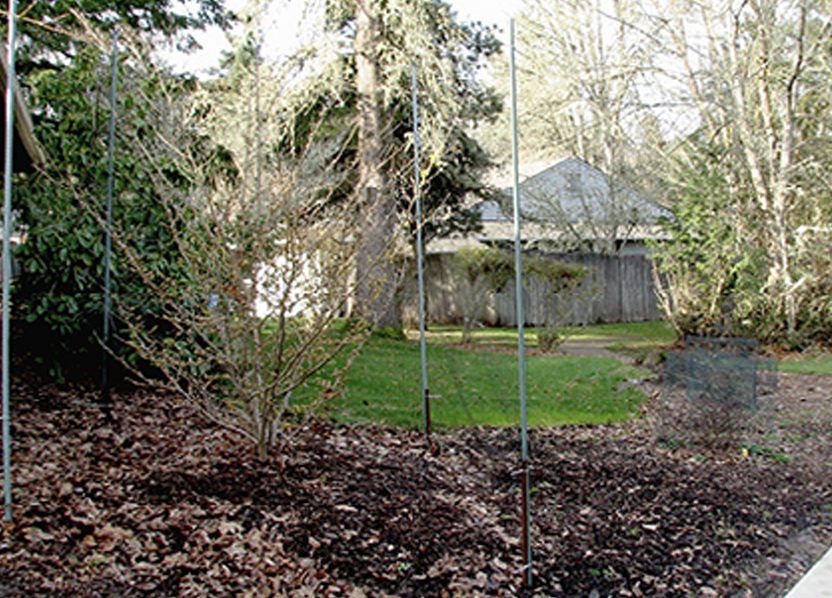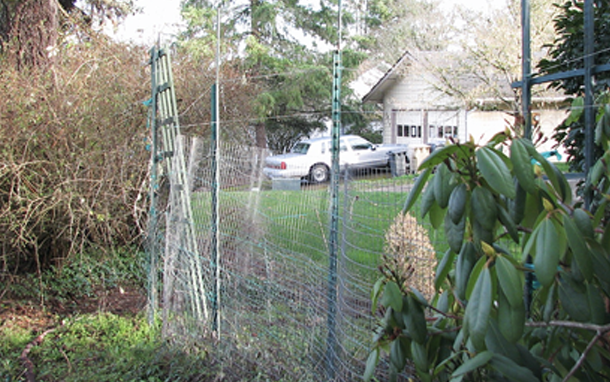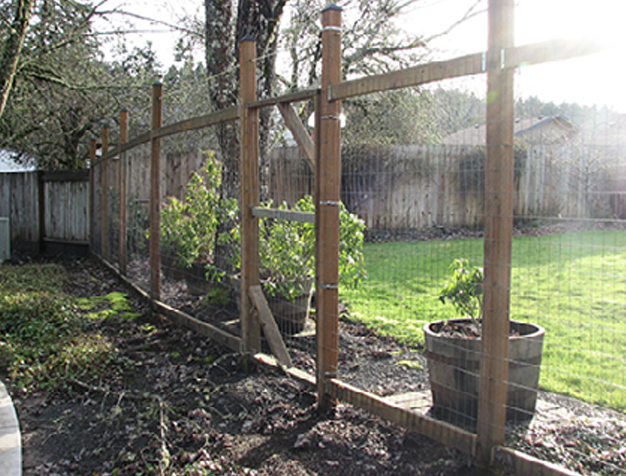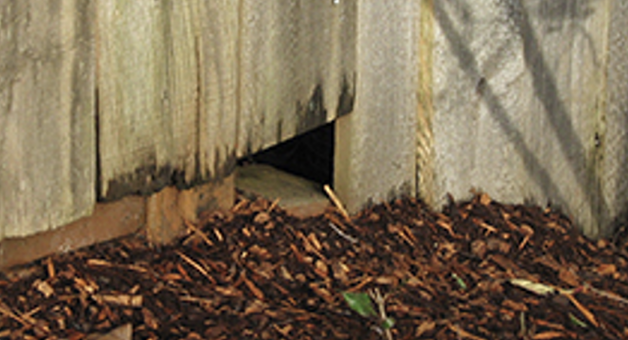Native wild animals are part of our natural landscape. They enrich our lives as we watch them and also assist with important processes such as pollination, management of insect populations, and soil nutrient mixing and aeration. Human structures, communities, and activities overlap with the spaces and resources used by this diverse wildlife community. This “shared habitat” situation can pose some challenges when animals’ day-to-day activities come into conflict with ours. Non-native, invasive species that thrive among humans (such as black and brown rats, European starlings, feral swine, rock doves, and others) actually damage habitat for both humans and native wildlife.
What are animals seeking, and why?
In general, we know that habitat provides food, water, and shelter for animals. But each species has specific habitat requirements. In other words, not all species of animals need the same things. There must be the right combination of needed resources for an animal of a given species to survive and reproduce. This is habitat. Human structures, spaces, and resources can seem like invitations to settle and make a living.
How do human-wildlife conflicts happen?
Conflicts can arise when wild animals:
- Occupy our structures, such as our homes, sheds, or even vehicles, while seeking shelter from weather or from predators. These safe havens might also be an attractive place to raise young.
- Eat things we value while they search for abundant, high-quality food. They might eat:
- Our landscaping and ornamental plants
- Our garden produce, fruit, or small livestock (such as chickens, rabbits, and honeybees)
- Our agricultural crops (such as apples, calves, and timber)
- Our pets (such as cats and dogs)
- Cause structural damage to buildings, crops, vehicles, windows, or other assets while they are seeking food, building shelter, or trying to defend themselves.
- Pose a health and safety risk to human beings, either directly (such as by biting us) or indirectly (by exposing us to their parasites or waste products).
- Zoonotic diseases are passed to humans by animals, their waste products, or their parasites. They are an important concern that should be kept in mind. Bubonic plague, Lyme disease, rabies, leptospirosis, hantavirus, and other serious illnesses can result from exposure. Most of these have been observed at least once in the Pacific Northwest.
- That said, not every animal is sick or carrying disease organisms. Thoughtful management of our spaces and behaviors greatly reduces our risk of exposure.
Is this issue worth investing my time and energy, and can I do it alone?
Like any other conflict situation, it is important to slow down and assess what is going on. Which of the types of conflicts listed above are you experiencing?
- Are there human health or safety concerns? Direct threats to human safety can be obvious, such as when a wild animal has bitten, scratched, charged, or stalked a person. However, potential health issues can be indirect and not immediately obvious, such as when dust containing hair, urine, and feces causes allergies or even disease among people living in a rodent-occupied home. Don’t hesitate to call on an Extension professional, your state wildlife agency, or your city or county health department with questions.
- Once you’ve determined there’s no immediate human health concern, ask yourself: How serious is the problem or damage? Is the problem insignificant, tolerable, or beyond acceptable?
- Can the problem be interrupted and solved by replanting with native plants that are tolerant of native wildlife eating habits? In addition to providing food and shelter, many native plant species have also evolved ways to protect themselves against overuse.
- Is the problem one you can effectively manage on just your property, or will neighbors or others need to cooperate? Animals cross several human ownership boundaries in their daily quests for resources, so most wildlife concerns are shared by neighbors. In these cases, managing many human-wildlife conflicts will require conversation and coordination among neighbors and possibly one or more government agencies, such as the state fish and wildlife office and a city government.
- Even if the problem is limited to your home or property, will you need help to manage this conflict? Ask yourself: Do I have the tools, resources, technical knowledge, and time to do it myself? Sometimes the most efficient approach is to contract with a professional to tackle a problem.
I love wild animals, and want them to be happy and healthy, but I can’t stand this problem I’m having. Why can’t I just move them?
- Animals that are moved (translocated) out of their familiar home range suffer low survival rates (often less than 50 percent) due to many interacting factors.
- They are not familiar with where to hide, and so become easy targets for predators.
- Among territorial animals, an individual dropped into an area is immediately “trespassing” in a place aggressively defended by other members of their own species. Combat can be deadly!
- Many animal species have a homing instinct that draws them back to their original home range, making them unlikely to settle down, f ind food, and find shelter where they’ve been moved. This drive pushes them to cross roads and to expose themselves to numerous risks. Few animals survive all of those hazards.
- Translocated animals may not find enough of the right food to survive, or they may arrive someplace where all of the best food sources are already defended. Slow starvation or learning to take unsuitable food from humans and to closely associate with humans (known as food conditioning and habituation) are not good options.
- Most species have some sort of social system, even if it’s not highly territorial. Strangers from a separate population can disrupt the local population structure.
- A translocated animal might be carrying disease or parasites into a healthy population.
- Some animals causing conflicts are not native to our state and—even worse—some are highly invasive. They can outcompete and damage native species and the habitats that sustain them. It is illegal to move non-native, invasive species because of all the negative effects they bring.
- Finally, there’s the ethical aspect of “moving the problem.” Animals that have grown up depending on food from humans will not unlearn that association. Unfortunately, habituated animals that get into conflict with humans are going to be repeat offenders.
Where do I start?
Identification is the first step in managing a conflict. Determine what wildlife species it is and how the animals are getting in to do the damage.
- If you have actually seen the animal, and especially if you’ve gotten a picture of it, you can use field guides, online websites, state biologists, the national Ask Extension tool, or your observations to help identify the animal.
- Once it is identified, you can learn more about what kinds of foods the animal eats, what season it nests or dens, and other information to help you understand what food and shelter it is trying to get from your home or garden.
- We often have to use indirect clues in order to identify animals. Use the places, sizes, and types of entry point(s) they’re using to help estimate the animal’s body size. Body oils and hair caught on openings are more clues about the animals and how they enter the building or area.
If you're taking photos to help with identification:
- Fresher is better, whether it’s a track, scat, a damaged plant, or a dirt mound. Time and weather distort the fine details that are most helpful in diagnosing the animal species.
- Include well-known objects in the image that give a sense of relative size and scale (such as a quarter or ruler).
- If you see droppings, get close enough that the expert can use the visible fragments to determine the contents.
- Details matter, so be sure to capture close-up images too. For example, if a twig is clipped, is it a clean cut (probably a rodent or rabbit) or is there a ragged or ripped edge (indicating a deer).
What are the basic tactics I can use to deal with these situations?
Block access
Finding ways to keep animals out is an excellent strategy for interrupting a problem. Basically, by keeping the animal away from whatever it might damage, you prevent the problem.
Protect the border of an area or individual plants. Make sure you’re choosing materials and methods that will withstand the body size, weight and “tools” (such as teeth, claws, drilling and digging ability) that the animal brings to the conflict. For example, a “deer fence” made of lightweight bird netting hung on a couple of poles will not withstand hungry deer.
Block off holes, gaps, and spaces that allow entry to your home or garden. The “fence” you need may be as small as a plug of steel wool stuffed around a pipe that comes up through your floor, or as broad as tight-stretched bird netting to keep pecking birds out of eaves.
Deter
Convincing animals to avoid resources they want and need is a tough proposition! Deterrence often needs to be paired with other methods to manage the conflict.
Deterrence via the 'landscape of fear'
Most species are prey for other animals, so work to associate fear or a sense of risk with an otherwise desirable resource. This reduces the attractiveness of that resource. Depending on the species you want to deter, homeowner tools might range from flashy tape (birds), motion-activated sprinklers, or mechanized predator or prey calls.
SAFETY NOTE: Only under limited conditions can domestic dogs be used to deter wildlife conflict. Outside of those professional and specialized uses, “siccing” dogs on native wildlife is illegal, unethical, and seriously dangerous for the dog. Pet dogs may have the drive to engage, but they lack the instincts to avoid becoming prey themselves or the target of a lethal kick.
Deterrence via disgust
Add unpleasant tastes or smells to make food taste or smell bad.
Deterrence via discomfort
Use sticky materials or strips of spikes to make an otherwise great bird perch uncomfortable or unusable. Electric fencing is sometimes used to give animals a little shock to encourage them to choose a different direction.
Some precautions:
- Many deterrent products have not been tested strictly enough to establish whether they are effective, and those that have been tested vary widely in their effectiveness.
- Animals can habituate to many deterrents, especially if it’s between them and their food. If nothing really bad happens to the animal, the signal we send them decreases in importance or shock value to the point of being ignored.
- The countermove is to be unpredictable. Vary the tastes, smells, sounds, timing, etc., so animals are less likely to become indifferent.
Remove animals
In this context, removal means killing the animal.
- Although it’s permanent for the individuals killed, animal removal is a temporary solution to the problem. If food and shelter are still available, other animals will eventually find and use those resources. Use removal as one step in managing the conflict over time. Remove animals AND move or get rid of food sources such as pet food, spilled birdseed, and cold compost heaps (for example) to prevent the next conflict.
- Toxicants (poison) and traps are blind. They have no way of knowing which animals we want to kill and which ones we want unharmed. Therefore, it is vital to take care not to expose non-target animals to the risks these methods pose.
- Species identification is vital because it determines:
- Legal management status and treatment options (for example, do you need a permit?)
- Which removal approaches to use
- When using toxicants as tools, keep in mind the following:
- READ THE LABEL: THE LABEL IS THE LAW. Do not deviate from the uses and methods prescribed by the label.
- Poison baits are meant to be used in very specific situations and ONLY those situations in order to reduce any chance of non-target exposure. Most require bait stations for placing bait. These are not optional. Bait stations are required to minimize the risk of killing non-target animals, including pets, and to minimize dangers to humans.
- Some products are available in retail stores. Label restrictions still apply, including the method of bait placement, as mentioned above.
- Many toxicant tools are Restricted Use, meaning that only licensed pesticide applicators can buy and apply them.
Where can I find more information or assistance?
- Use the Ask Extension website to identify species and solutions. You can ask experts from across the broad range of Extension expertise, and you can even upload a photo to help illustrate your question.
- The Oregon Department of Fish and Wildlife (ODFW) is an excellent source of technical and legal information about wildlife management situations. Visit its Living with Wildlife website.
- Call 800-720-6339 to get contact information for your local district biologist, who can answer questions and address concerns.
- Washington Department of Fish and Wildlife offers excellent resources for living with wildlife.
- Oregon and Washington residents can contact wildlife agency-trained wildlife control operators, who are private business people licensed to assess and manage wildlife conflicts. Many offer removal, blocking, and prevention services. As with any contractor, ask for an estimate and references. See these websites for a current list:
- Oregon
- Washington
- Idaho: Idaho residents are allowed to trap and remove wildlife to protect private property and safety. Written permission from Idaho Fish and Game is required to transport wild animals. Idaho residents can engage the services of private nuisance control companies. Loaner traps are sometimes available at local Idaho Fish and Game offices.
¡Use los pesticidas con seguridad!
- Póngase ropa de protección y equipo de seguridad según las recomendaciones de la etiqueta. Báñese después de cada uso.
- Lea la etiqueta del pesticida—aunque lo haya usado antes. Siga al pie de la letra las indicaciones de la etiqueta (y cualquiera otra indicación que Ud. tenga).
- Tenga precaución al aplicar los pesticidas. Conozca su responsabilidad legal como aplicador de pesticidas. Usted puede ser responsable de heridas o daños resultantes del uso de un pesticida.

